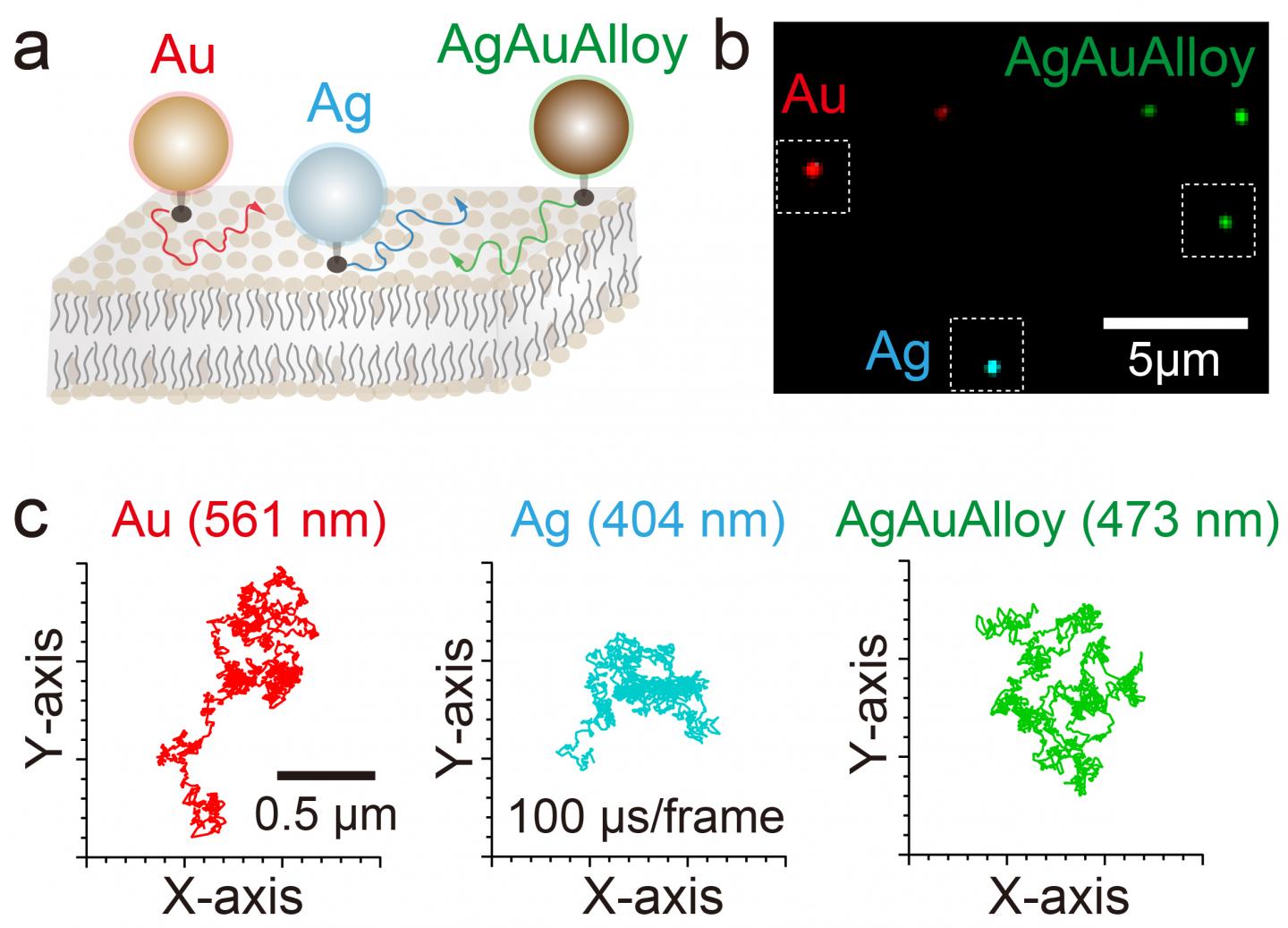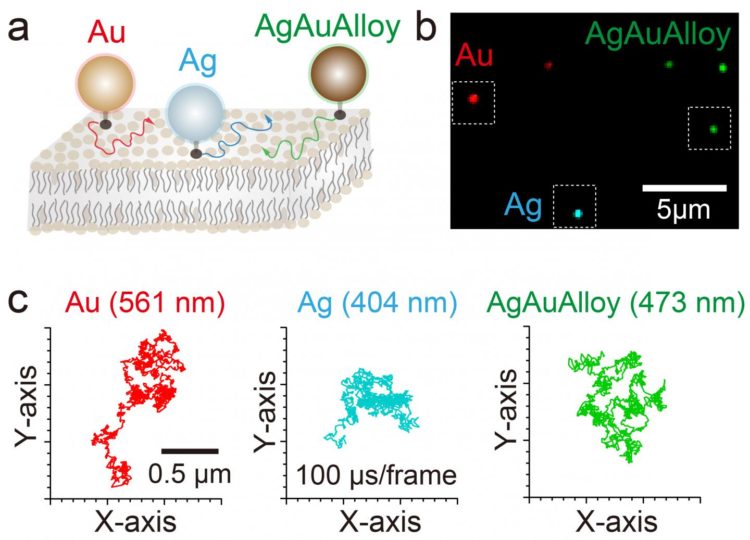
Credit: Ryota Iino, Institute for Molecular Science, National Institutes of Natural Sciences, Japan.
For the first time, researchers can track biological molecules with unprecedented speed and precision thanks to the use of multi-metallic nanoparticles.
The researchers published their results on October 17 in ACS Photonics, a journal of the American Chemical Society.
Nanoparticles are used to track the movements of biological molecules isolated from cells and also in living cells, such as the mechanisms related to intracelluar transport, cell signaling, and other processes. Researchers have traditionally used gold nanoparticles to track these movements, but, in imaging, they could only show one color: green. Now, scientists can see more than green through the use of gold, silver and gold-silver alloy nanoparticles.
“Gold nanoparticles are very powerful tools used to precisely track the fast motion of biomolecules,” said Ryota Iino, paper author and professor at the Institute for Molecular Science in the National Institutes of Natural Sciences. “However, the imaging was previously limited to monochromatic green. In this study, by using gold, silver and silver-gold nanoparticles, we have succeeded in extending the color palette–between purple and green–of high-speed and high-precision imaging of biomolecules.”
Other tagging techniques, such as organic fluorescent dyes, can extend the color palette to include reds, but they tend to display as weaker colors than the sharp and strong showing that metallic nanoparticles give off. Metallic nanoparticles are also more stable than organic dyes, meaning they remain visible as they move with the tagged biomolecule for a long period.
“Nanoparticles show much stronger signals, and they don’t blink in the same way organic dyes can,” Iino said. “Different nanoparticles also strongly scatter the light at different wavelengths, meaning they show up as visibly different colors when imaged.”
The team is now working on extending the imaging color palette even further with newly engineered nanoparticles. They also hope to use even much smaller nanoparticles to have a better understanding of all molecular mechanisms in functioning cells.
###
This work was supported, in part, by the Grants-in-Aid for Scientific Research on Innovative Areas “Molecular Engine”, by Grants-in-Aid for Scientific Research from the Ministry of Education, Culture, Sports, Science, and Technology of Japan and by the Imaging Science Project of the Center of Novel Science Initiatives of the National Institutes of Natural Sciences.
Other contributors include Jun Ando, Akihiko Nakamura and Mayuko Yamamoto, all of the Institute for Molecular Science in the National Institutes of Natural Sciences. Ando and Nakamura are also affiliated with the Graduate University for Advanced Studies. Chihong Song and Kazuyoshi Murata, both of the National Institute for Physiological Sciences in the National Institutes of Natural Sciences, also contributed.
Media Contact
Ryota Iino
[email protected]
81-564-595-230
Related Journal Article
http://dx.





